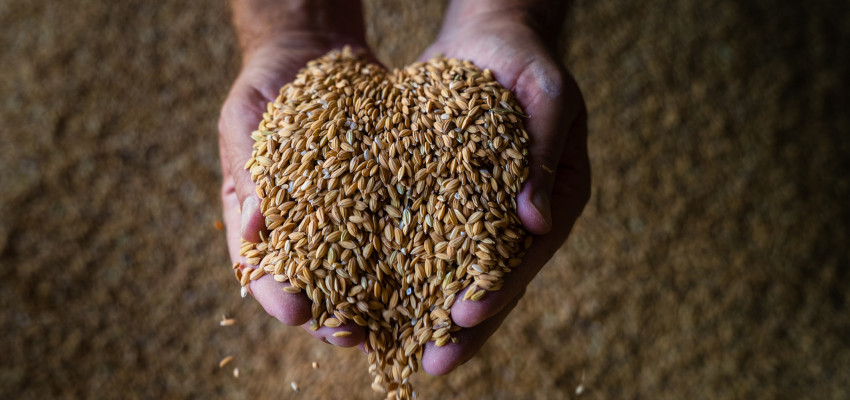By Hannah Becker on January 20, 2017
Three Reasons GMOs are Necessary to Feed the Planet

Children starving along the side of the road.
Families scavenging for some source of protein.
Meat products added to the black market.
Sounds like a scene from the latest Hunger Games movie, but unfortunately, it’s not restricted to Hollywood theatrics. Instead, it’s become a reality for millions across our planet.
According to the U.N. Food and Agriculture Organization:
- At least eight million people die each year of hunger-related diarrhea, pneumonia and other illnesses.
- Nearly one billion people are currently considered “malnourished.”
- Worldwide, a child dies of hunger every 11 seconds.
Our world is currently facing an exploding growth in population, with predictions of more than 9.7 billion mouths to feed by 2050. With fewer people growing their own food, today’s farmers are tasked with feeding hundreds of thousands of households around the globe.
Here are three ways genetically modified organisms (GMOs) are providing a solution to the decreasing supply of farmers and usable land with an increasing demand of nutritious food products:
Produce More, With Less
Thanks to genetic modification, GMO crops offer higher yields (more food), with less input (added resources like water, pesticides and fertilizer). This means modern agriculture can produce more with less – a big win-win for all concerned. By maximizing our output and being conscious of our limited natural resources (like land, water, top soil, etc.), today’s farmers can feed more people than ever before. In 1960, the average American farmer fed 25.8 people; today, one farmer feeds 155 people. Thank you, technology.
Easier on the Environment
As we discovered in Five Ways Agriculture Is Going Green, GMO crop cultivation is correlated with reduced chemical applications, decreased soil erosion, improved water quality and decreased greenhouse gases. In 2012 alone, the environmental improvements associated with GMO production was equivalent to removing 11.9 million cars from the road per year. By offering less negative environmental impact, growing genetically modified crops help maximize our production efforts, while conserving our natural resources for generations to come.
Lifesaving Superfood
Biotechnology allows us the ability to enhance plants’ characteristics – like disease resistance, nutritional value, resource efficiency, etc. – faster than we can through selective breeding. While creation of “superfoods” may sound like science-fiction to those of us living in first-world nations, such GMO-related scientific breakthroughs have been literal life savers for millions around the globe. Consider the wilt-resistant banana or golden rice – two examples of how GMOs can help prevent hunger and nutritional deficiencies around the world.
Agriculture’s #1 Role
In our modern societies, harbored within developed countries where widespread hunger isn’t something that we are forced to face on a regular basis, it’s easy to get caught up in the latest food trend debate – organic vs. nonorganic, grass-fed vs. grain-fed, GMO vs. GMO-free – and lose sight of our food production’s main purpose: feeding the world.
The jury is in: the number of mouths to feed is increasing, while the number of farmers is rapidly declining. Something has to give, and GMOs currently provide a viable solution to the world’s impending food crisis. Let’s feed our growing world.


